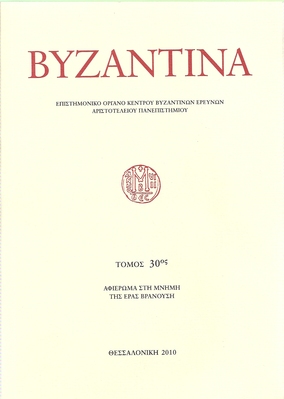Η Ευδοξιανή Εκκλησία της Γάζας
Part of : Βυζαντινά : επιστημονικόν όργανον Κέντρου Βυζαντινών Ερευνών Φιλοσοφικής Σχολής Αριστοτελείου Πανεπιστημίου ; Vol.31, No.1, 2011, pages 83-105
Issue:
Pages:
83-105
Parallel Title:
The Eudoxian Church at Gaza
Author:
Abstract:
A young calligrapher and deacon of the 5th century named Marcus delivers us information about a church of his time at Gaza. This building is known as Eudoxian Church and the initiative for its construction belongs to the bishop of the city, Porphyry, as part of his planning to strengthen the Christian element of Gaza that was surrounded by powerful remains of pagan traditions. Within these margins, a holy vision directed him to ask the contribution of the empress Eudoxia, who corresponded at the bishop’s call with joy as a sign of her gratitude to God for the birth of her son. As a result, she patronized the construction of that church exactly at the center of Gaza, at the same point where an ancient temple of Zeus Marnas existed and used to underline the existence of strong pagan cults. The work was assigned to an architect named Roufinos who followed the exact order of Eudoxia to make a church at the shape of the cross, a fact that proves rather inaccurate the belief of modern science that the Eudoxian Church of Gaza was a basilica. The construction began at 402 and the inauguration took place at the day of Easter of 407, while the celebrations lasted for seven days, with the participation of a multitude of clerics, monks and simple Christians. In spite of its importance, the church that took the name of the empress Eudoxia was aban-i-idoned probably in 6th century and therefore its depiction at the “well-known” map of Madaba is not possible. However, what we know for sure is that the Eudoxian Church at Gaza was destroyed through the ages, while its material was used in second place for the construction of the later Muslim mosque of Gaza.
Subject (LC):




